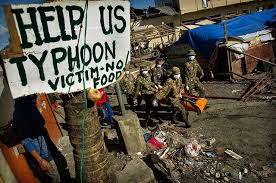Philippines is a country that is prone to natural disasters such as typhoons, earthquakes, and volcanic eruptions. As a result, it is imperative that the government, private sector, and individuals work collectively to build a more resilient Philippines. One of the key steps towards building a more resilient Philippines is to strengthen disaster risk reduction and management efforts. This includes developing early warning systems, establishing emergency response plans, and investing in infrastructure that can withstand natural disasters.
A second important step is to improve access to essential services such as healthcare, education, and housing. These services are crucial in the aftermath of natural disasters, and investing in them can help mitigate the damage caused by disasters. There is a need to reduce poverty and increase economic opportunities. Poverty is a major setback for disaster resilience, as it limits individuals' and communities' ability to prepare for and recover from disasters. Creating economic opportunities and increasing access to education and training can empower people to become more self-sufficient and resilient.
Furthermore, incorporating climate change adaptation and mitigation strategies is also key. Rising sea levels, increased temperatures, and extreme weather events are all related to climate change, and they pose significant risks to the Philippines. Investing in climate change adaptation and mitigation can help the country mitigate the risks posed by climate change and build a more resilient future. Another important aspect of building a more resilient Philippines is to promote social cohesion and community participation. This includes strengthening social networks and building local capacity to respond to disasters. When communities are cohesive, they are better equipped to support each other during emergencies.The government can also play a role in promoting resilience by improving regulation and enforcement. Ensuring that buildings, roads, and other infrastructure are constructed in accordance with safety standards can go a long way in preventing disasters or reducing their it is important to raise public awareness about the importance of resilience. Education campaigns can help citizens understand the risks they face and the steps they can take to prepare for disasters. Such campaigns can also promote the collective responsibility we all have towards disaster resilience.
Additionally, building a more resilient Philippines is a complex task that requires a multi-faceted approach. By strengthening disaster risk reduction, improving access to essential services, reducing poverty, investing in climate change adaptation and mitigation strategies, promoting social cohesion and community participation, improving regulation and enforcement, and raising public awareness, we can create a safer and more resilient Philippines.




No comments:
Post a Comment